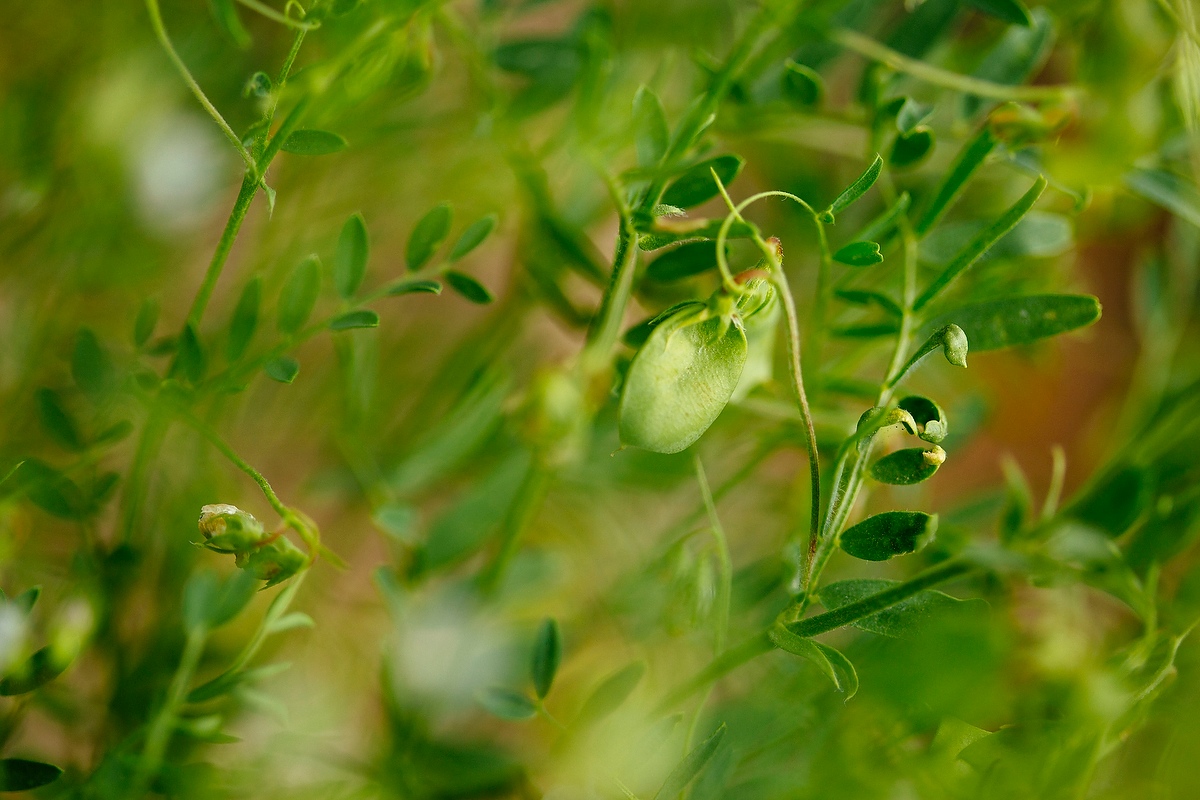Weed Management
Lentils are a very poor competitor with weeds. Good weed control in lentils requires a long-term strategy involving the entire crop rotation. Perennial weeds, such as Canada thistle and sow thistle, should be controlled in the years prior to lentil production. Volunteer wheat and barley are difficult to clean from small-seeded lentil and should be controlled in-crop. Weeds that germinate late in the season, such as Russian thistle, kochia, and wild tomato, cause severe competition to the crop. Late emerging weeds interfere with harvesting, increase dockage, and increase staining and moisture levels in the harvested seed.
A late fall application of a phenoxy herbicide such as 2,4-D or MCPA can be used at rates of 280 grams active ingredient per hectare (g ai/ha) or less to control winter annual broadleaf weeds in fields planned for lentil production. Spring applications and/or applications that include dicamba should be avoided to prevent possible crop injury.
Pre-seed or pre-emergence burnoff is important for controlling weeds before the crop emerges. Soil-applied products may provide early weed control during early crop growth but usually require moisture for activation. For in-crop applications of herbicides, the critical weed-free period for lentils is between two to five nodes of development.
The introduction of Clearfield® technology has given lentil growers additional in-crop herbicide choices. Research on Clearfield® lentils concluded the optimum timing for herbicides was between the five to six-node stage and the 10-node stage. Weeds emerging after the 10-node stage were less likely to reduce yield but may lead to harvesting issues.
Make sure to follow label directions and apply the herbicide at the correct time of plant development. Some herbicides can move in the soil after heavy rainfall, so if the use of these products is anticipated, lentils must be planted at least 5 cm (2 in.) deep to prevent injury to seedlings. For example, do not use Sencor® in soils with less than 4% organic matter.
Edge™ and trifluralin (Rival®, TreflanTM) are registered only for fall application. A spring application, especially in lighter soils, can cause seedling injury and may lead to increased incidence of seedling diseases such as Rhizoctonia wire stem.
Herbicide-Resistant Weeds
Herbicide rotation is an important step in slowing the development of resistant weeds. Resistant weeds can have a significant impact on lentil crops simply because lentils are a less competitive crop and there are limited herbicide options. A few examples of herbicide-resistant weeds that are particularly troublesome for lentil growers include Group 2 resistant kochia, wild mustard, and cleavers, as well as Group 1 and Group 2 resistant wild oat. Rotating herbicide groups away from Group 1 and 2 products, especially in years where lentils are not grown, may help manage resistant weeds. Research indicates that alternating between two modes of action for wild oat control will double the number of years for resistance build-up, and alternating with a third mode of action will increase the time of resistance build-up to four times as long as for a single mode of action for wild oat control.
Minimizing Crop Injury to Herbicides
During periods of crop stress (heat, drought, frost, or after land rolling) the ability of the lentil crop to tolerate herbicide application may be reduced. Crop injury can be reduced by waiting approximately four days after the crop stress occurs before applying herbicide, by maintaining water volumes at label recommendations, and by applying the product during the evening.
Lentils can be damaged easily by some herbicides registered for other crops. Sprayer tanks should be thoroughly cleaned before applying any crop protection product to lentils and care taken to minimize drift of herbicides from other fields onto lentil fields.
Alternatives to Chemical Weed Control
Non-herbicide options include tillage, harrowing, and higher seeding rates. Tillage may be a tool to reduce kochia populations. Burial of kochia seed to at least one cm or deeper can result in reduced germination or death of the germinated seed prior to emergence.
Alternatives to chemical weed control research completed at Agriculture and Agri-Food Canada, Scott showed that post-emergent harrowing with a tine harrow can be used to control weed seedlings when the crop is very short (less than 10 cm), provided that the foliage is dry and the operation is done on a warm, sunny day. An increased lentil seeding rate should be used to offset the plant losses during harrowing.
Higher seeding rates are a great option for improving weed competitiveness. Research by Dr. Steve Shirtliffe at the University of Saskatchewan suggests higher seeding rates of up to 240 plants per square metre reduced weed populations and increased lentil yields.
Related Resources
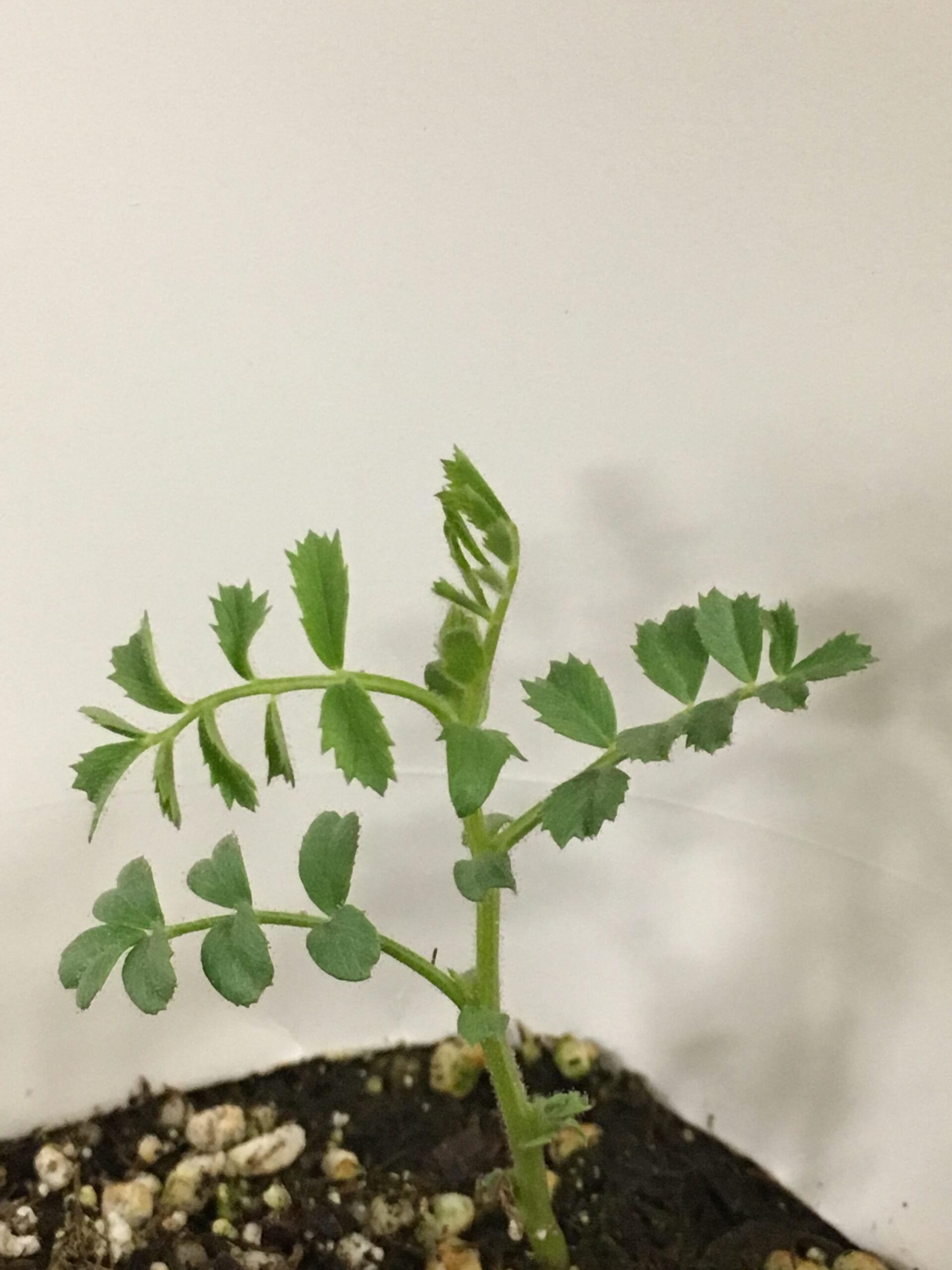
Staging Pulses for Herbicide Applications In-Crop
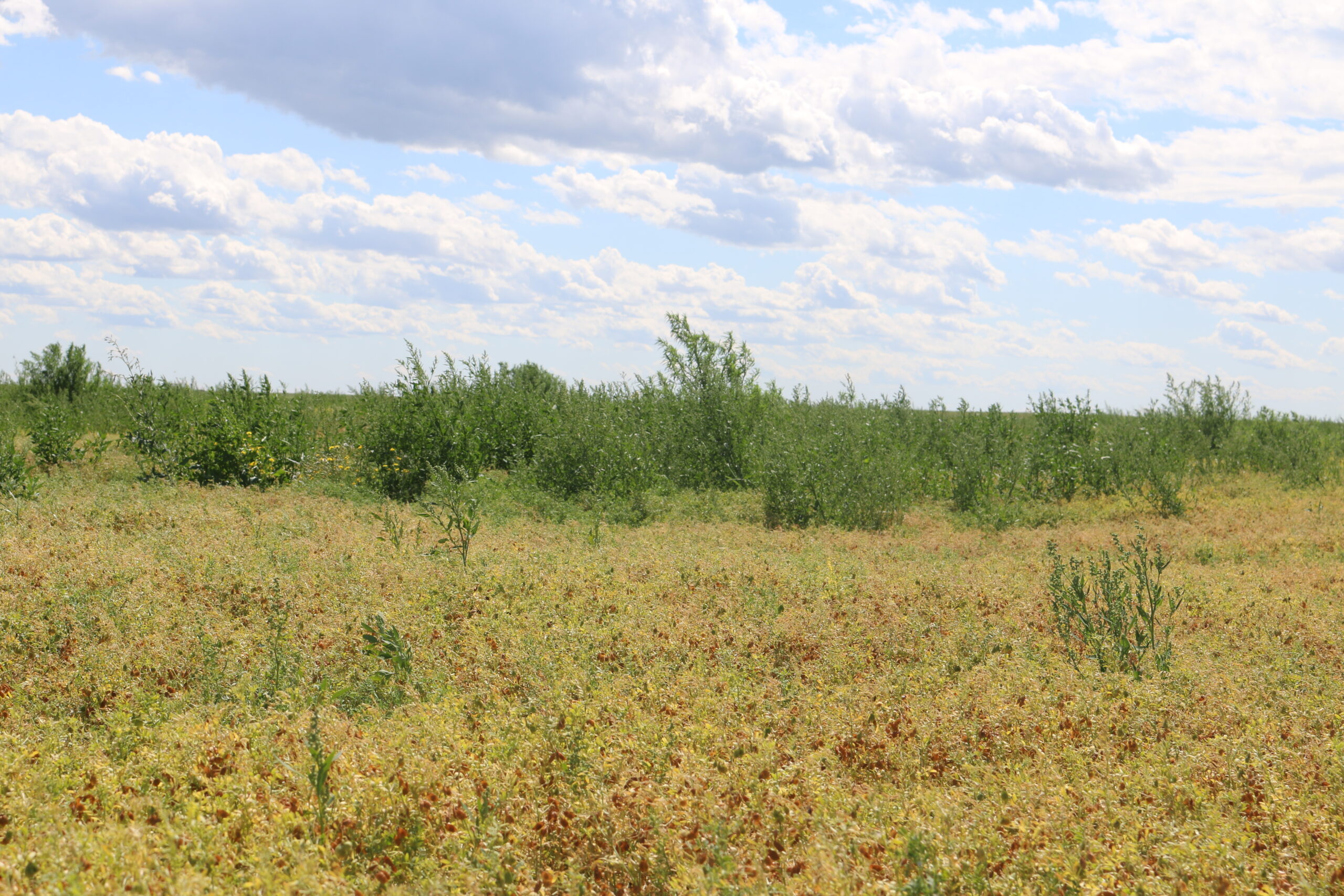
Critical Period of Weed Control in Pulses
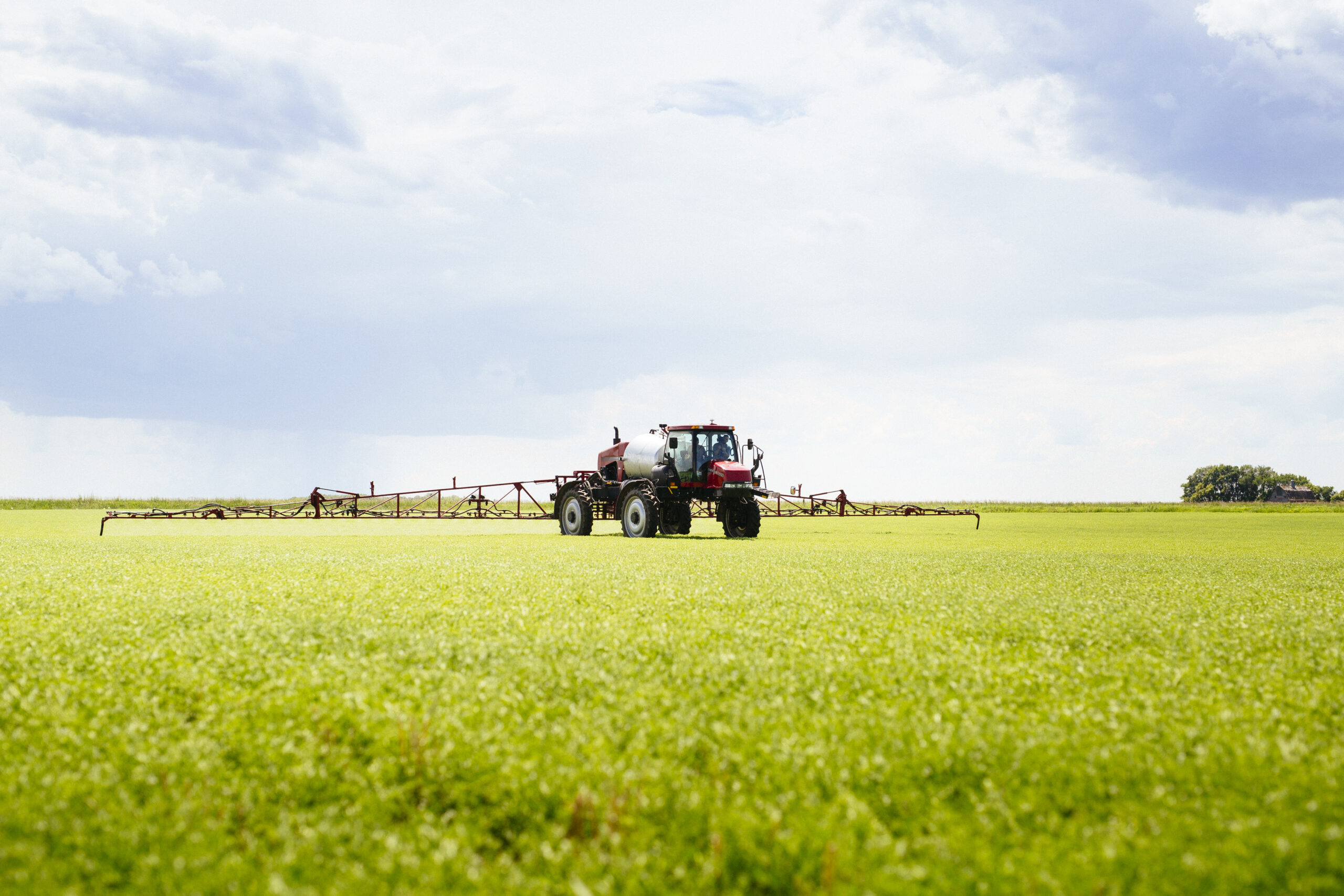
Post-Emergent Herbicide Options for Lentils
Disease Management
Disease can severely impact lentil yield and quality if inoculum is present and environmental conditions are conducive to disease development.
These are soil-borne fungal diseases that can infect lentil seedlings and can be caused by species of Rhizoctonia, Pythium, Fusarium, and/or Botrytis. These pathogens are present in all Saskatchewan agricultural soils and can infect and kill individual seedlings from germination to the early flowering stage. Lesions may develop on the base of the stem, causing discolouration and constriction of the stem. Diseased plants turn yellow and die. Usually only scattered plants are infected, so these diseases rarely cause economic loss. Seedling stress or damage due to environmental or herbicide injury can lead to an increase in the incidence of seedling blight, especially wire stem.
Root rots can also be caused by Aphanomyces species and Aphanomyces euteiches has been identified across most of Saskatchewan. There are no seed treatments that control A. euteiches, and it can survive in the soil for many years. It is the most difficult to control among the root rot pathogens, can infect the plant at any stage, and is most aggressive under wet conditions. For more information on root rots see Root Rot in Peas and Lentils in Western Canada.
Ascochyta blight is a serious foliar disease of lentils in Western Canada. It can be seed-borne or residue-borne, resulting in infection of leaves, stems, pods, and seed. Lesions appear as tan or grey spots with dark margins and have tiny black fruiting bodies (pycnidia) in the centre. Cool, rainy weather is conducive to infection and spread of the disease. It is most damaging to maturing pods and seeds if prolonged wet weather occurs during July and August. Severely infected seed lots may not be marketable or will be downgraded due to discoloration. Most lentil varieties now have some level of resistance to Ascochyta blight.
Ascochyta blight inoculum overwinters on lentil residue, so producers should not plant lentils on lentil stubble.
Anthracnose is a foliar and stem disease found in most lentil producing areas in Western Canada caused by Colletotrichum truncatum. Research has identified two races of Anthracnose. A few lentil varieties have been introduced with resistance to Race 1 (Ct1), but no varieties are resistant to Race 2 (Ct0). Infection results in sunken grey to cream coloured lesions on leaves and stems. Lower leaflets turn yellow and brown and drop to the soil surface. The lower stems become cankered by the disease and the plants die prematurely.
Lesions and dead plant tissue may contain tiny black resting bodies (microsclerotia) similar in appearance to Ascochyta blight pycnidia, but smaller, more numerous, and irregular in shape. Diseased patches in the crop can expand rapidly and appear as yellowed or grey patches within an otherwise green field. The disease is favored by warm, moist weather and commonly kills the infected lentil plant before seed is produced.
Anthracnose can be spread on wind-borne residue and dust during harvest and can be residue-borne in fields for a number of years. There is no research showing that the disease is frequently transferred from the seed to the lentil seedling. However, producers should attempt to use seed with low infection levels, as there are no seed treatment fungicides effective at controlling seed-borne Anthracnose. Extend crop rotations to avoid planting lentils in the same field for at least four years.
There are a few foliar fungicides registered for Ascochyta blight and Anthracnose in lentils. Generally, a fungicide should be applied before the plant canopy closes completely, which usually coincides with the timing of first flower. However, follow label directions for correct time of application. The goal is to protect healthy plant material if disease inoculum is present in the field and weather conditions favour the disease. More than one application may be required if conditions favouring the disease persist.
A disease decision support checklist for Ascochyta and Anthracnose has been developed by Agriculture and Agri-Food Canada as a working tool for producers to help in establishing thresholds for fungicide application on lentils to control Anthracnose and Ascochyta in lentils.
Botrytis gray mould causes stem and pod rot during the flowering and seed filling stages and can cause economic losses. Soil-borne inoculum is present in all fields, but this disease is typically only a problem in heavy vegetative stands that have lodged due to wet, cool weather. Leaves wilt and drop off, pods fail to fill, and infected areas turn grey to brown. Clouds of gray spores are dispersed into the air as infected areas are harvested. There are foliar fungicides registered for the control of foliar blight caused by Botrytis gray mould.
Sclerotinia white mould may occur in maturing lentil crops under high moisture conditions that promote vegetative growth and lodging and can cause economic losses. Lentil crops are at increased risk to Sclerotinia infection if grown in rotation with other susceptible crops, such as canola, pea, or sunflower. There are foliar fungicides registered for the control of Sclerotinia stem rot on lentils. As with Botrytis, achieving the necessary coverage of infected stems often makes treatment difficult.
Research completed at the University of Saskatchewan revealed that all lentil tissues, (i.e. leaves, stems, pods, and flowers), can be infected by spores of Sclerotinia. Testing of plants at various ages that were infected with Sclerotinia showed that plants older than six weeks were significantly more susceptible. This decrease in resistance, combined with wet weather late in the growing season and a heavy plant canopy, may explain why Sclerotinia is more of a problem in maturing lentil crops.
Stemphylium blight has been identified in several lentil fields in Saskatchewan. The foliar disease has similar leaflet drop symptoms as Anthracnose, and lesions on leaves like ascochyta blight. It has not yet been confirmed as causing significant yield losses because the disease tends to show up later in the growing season. The fungus thrives under warm (25°C to 30°C), wet conditions, but spores can germinate as low as 5°C, which may indicate infection can occur under cool, wet weather as well. There have been differences noted between lentil varieties regarding their susceptibility to Stemphylium blight. Infection can cause seed staining, reduced seed size, and decreased germination rates.
Management of lentil diseases begins with crop rotation. Some pathogens can survive in the absence of a host crop (botrytis and stemphylium) or will affect other host crops in the rotation (sclerotinia). Varieties producing excessive vegetative growth usually have more frequent problems with late season botrytis and sclerotinia in years or locations with higher moisture.
Viral diseases do not typically cause economic impact in Saskatchewan lentil crops. Lentil seed-borne mosaic virus is a potential threat to lentils, as it may be introduced with infected lentil seed and spread by aphids.
Heat canker occurs when young lentil seedlings are exposed to hot soil surface temperatures. With heat canker, the seedlings wilt very quickly on extremely hot spring days. The pinched stem usually remains white, and often new shoots are started from the scale nodes.
Managing Fungicide Resistance
As with herbicides and weed resistance, managing fungicide use to prevent or slow the development of fungicide resistance is important. Use a foliar fungicide only when disease risk and potential loss are considered to be economically damaging (i.e., greater than the cost of control).
Development of resistance of several fungal pathogens to the strobilurin group (Group 11) of fungicides in other crops has been reported in Europe and in Saskatchewan and is of great concern. No more than two applications per year of any strobilurin fungicide should be made to the same field. The continuous use of strobilurin fungicides without fungicide rotation greatly increases the threat of disease resistance.
Any fungal pathogen population may contain some strains naturally insensitive to various fungicides. A gradual or total loss of disease control may occur over time if these fungicides are used repeatedly in the same fields.
The following strategy should be considered and implemented to delay fungicide resistance/insensitivity:
- Rotate the use of fungicides from different groups that control the same pathogens.
- Tank mix fungicides that have a high risk of developing insensitivity with other fungicides from a different group where both are effective on the target pathogen.
- Do not apply more than the maximum number of applications listed on the label. Avoid consecutive sprays of the same fungicide, or other fungicides in the same group, in a season. Fungicides belonging to the strobilurin group should not be applied more than twice a season in the same field.
- Fungicide application should be based on an integrated pest management (IPM) program that includes scouting and accurate record keeping.
- Monitor treated fungal populations for signs of fungicide insensitivity. If disease continues to progress after treatment with a product, do not increase the use rate. Discontinue use of the product and switch to another fungicide with a different target site of action.
Related Resources
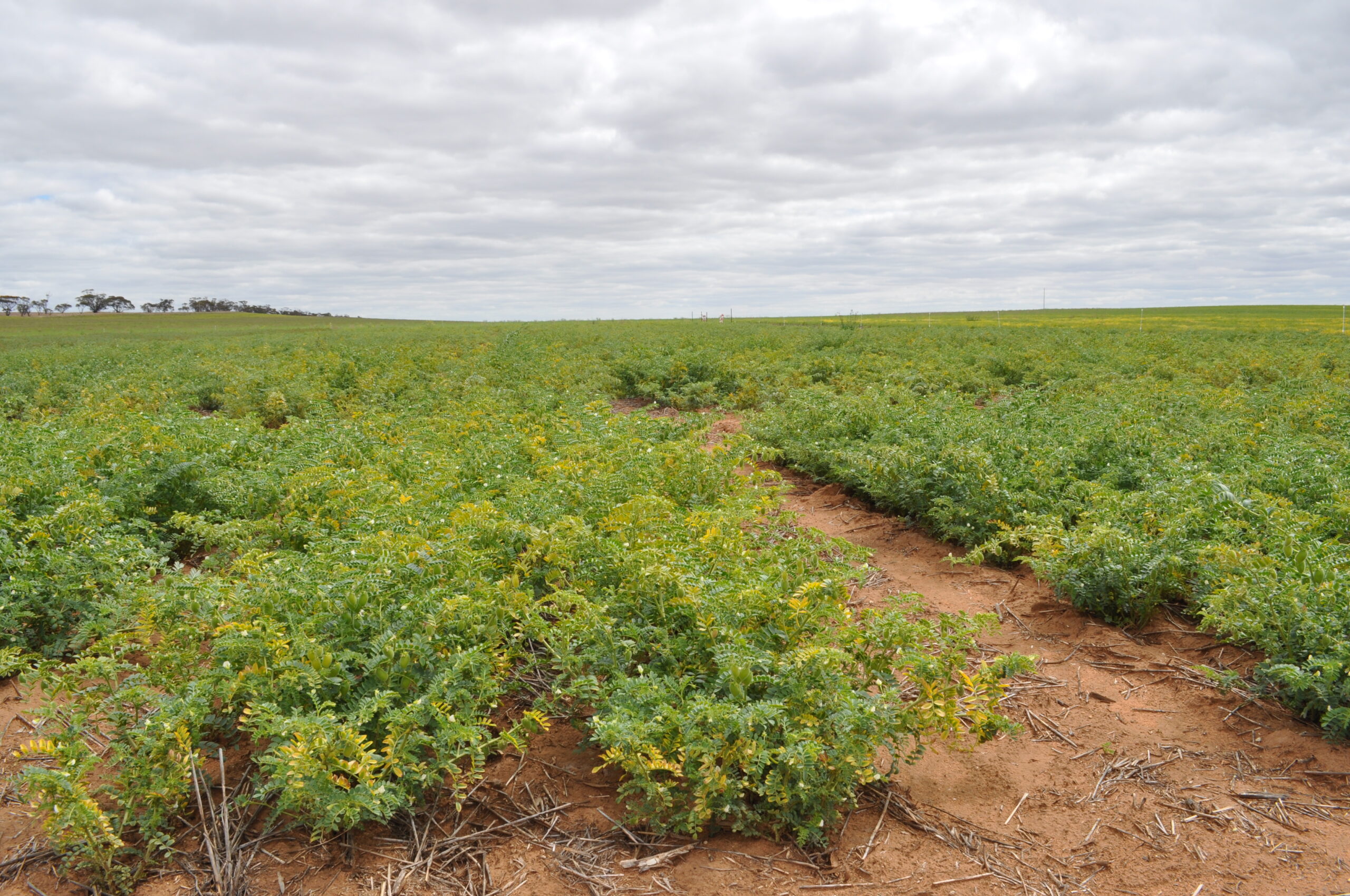
Viruses in Saskatchewan Pulse Crops
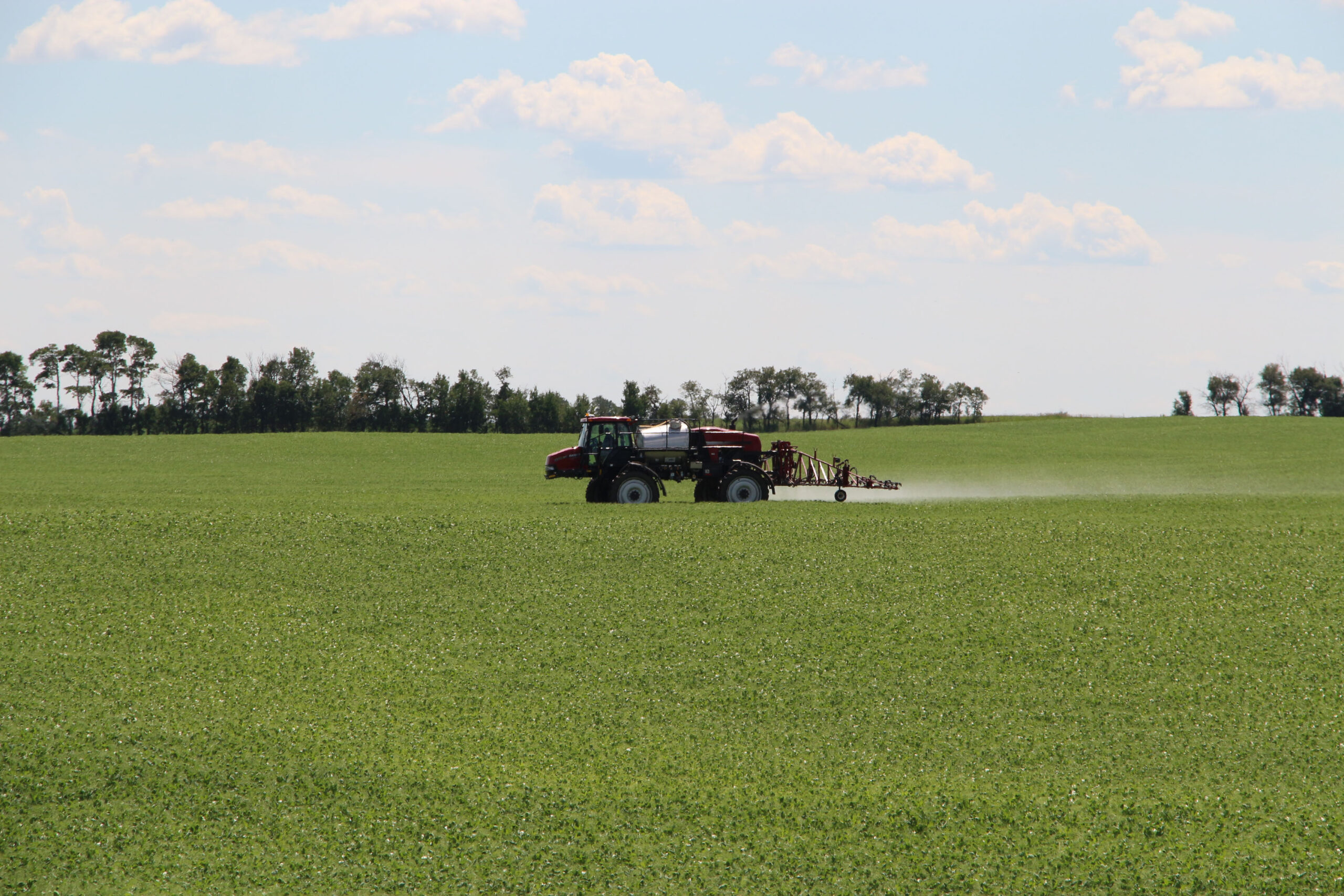
Lentil Fungicide Options
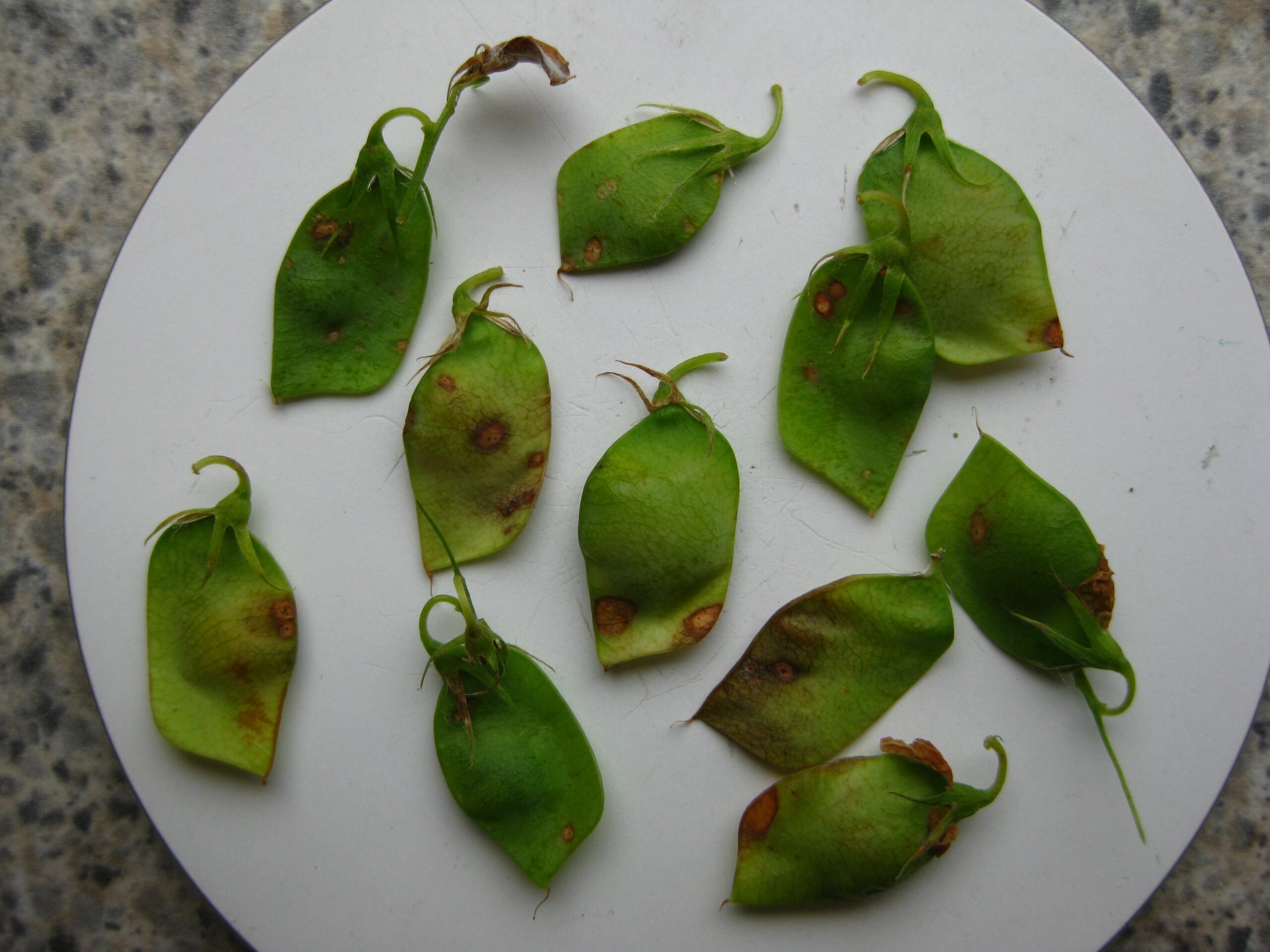
Fungicide Decision Support Checklist for Lentils
Insect Management
Grasshoppers
Grasshoppers generally do not favour lentil foliage. They pose the greatest threat from the bud stage through to early pod development because they eat flower buds, open flowers, and developing pods. Feeding on early developing pods can result in yield loss and cause delay in maturity as the plant tries to compensate for the lost biomass. Damage from grasshopper feeding is variable. Slight damage to the pods may result in shattering, seed loss, increased risk of disease, and seed staining. At harvest, grasshopper parts, specifically heads, can be a problem to clean out, resulting in grade reduction.
Economic control threshold is two grasshoppers per square metre in lentils. If control is needed, the optimal timing is when nymphs are at the third instar, which is usually about mid-June. At this stage the grasshoppers become mobile, consume more, and most of the hatch should be complete. Often, grasshopper numbers will be higher in field margins and a thick lentil crop will deter the insects from moving further into the field as they prefer more open and bare areas. If grasshopper populations only exceed the economic threshold in the field margins, an edge treatment with an appropriate insecticide can save time and reduce costs, while providing adequate control.
As of August 1, 2023, the Canadian Grain Commission has implemented a change so that grasshoppers, other insects, and insect parts are no longer a downgrading factor in lentils and are instead included in dockage.
Cutworms
Cutworms can cause damage to newly emerged lentil seedlings, and at times may require insecticide application. Below-ground feeding cutworms (pale western and red-backed cutworms) cut plants off at or near the soil surface. Foliar feeding cutworms (dingy and army cutworms) feed above-ground, consuming the plant foliage. The economic threshold for cutworms in lentil is 2 to 3 per metre squared in the top 7.5 cm (3 in) of soil. Lentil crops can often recover from cutworm damage given favourable growing conditions, but maturity may be delayed. Scouting for cutworms is often more successful in the evening when they come out to feed.
Wireworms
Wireworms are the immature stage or larvae of click beetles. Wireworms tend to be more abundant in moist soils and in lower, damper areas of a field. Wireworms tend to shred the plant tissue below the soil surface. Initially, symptoms may show up as wilting in the central leaves of the main stem but can eventually cause death of the plant. Damage may not be noticed early enough in the season to reseed. There is no established economic threshold for wireworm in lentils and there is no in-crop insecticide available to control wireworm. Controlling wireworm requires the use of insecticidal seed treatment.
Lygus Bug
Lygus bug can be a pest for lentils in the United States but has not been a problem in lentils in Saskatchewan to date. The economic threshold for lygus bugs in lentils is seven to 10 adults per 25 sweeps during blooming and podding. To monitor with a sweep net, make 25° to 180° sweeps (with a 38 cm or 15 in net) in at least five randomly selected places in the field.
Pea Aphid
Pea aphids can affect lentil yield and quality when present in sufficient numbers. Damage caused by aphids can be difficult to quantify because they rob plants of resources by piercing and sucking rather than chewing and defoliating. Adults can develop wings but are often wingless. Populations can increase rapidly due to their ability to give birth to live young without mating, and because they can easily migrate into areas on air currents. Control threshold numbers are approximately seven to eight aphids per plant tip.
